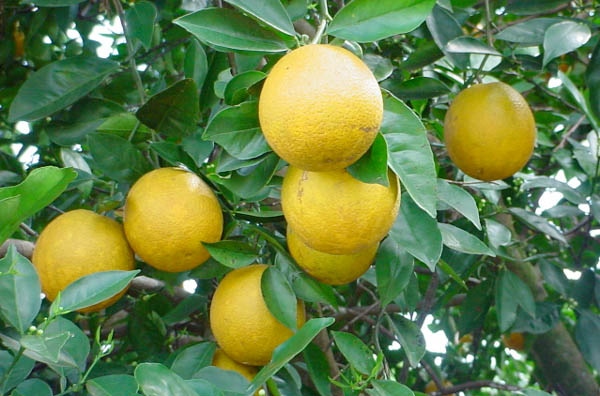
California, a state that buys 25 percent of Texas fruit, immediately switched back to buying Texas citrus when sweet orange scab restrictions were eased.A financial disaster for the South Texas citrus industry was averted, thanks to a finding by the USDA, which ruled it is safe to ship Texas citrus to citrus-producing states despite earlier fears concerning sweet orange scab.
January 7, 2011

What could have been a financial disaster for the South Texas citrus industry has been averted, thanks to a recent finding by the U.S. Department of Agriculture, according to industry leaders and scientists at the Texas A&M-Kingsville Citrus Center at Weslaco.
"In October the Texas citrus industry implemented a self-imposed ban on shipping fruit to California, one of our most crucial markets," said Dr. Mani Skaria, a citrus pathologist at the center. "But now USDA has determined that it is safe to ship our citrus to citrus-producing states despite earlier fears that our citrus would spread sweet orange scab, a fungal disease whose symptoms look a lot like the normal wind scar blemishes found on most of our citrus."
After a risk assessment, USDA's Animal and Plant Health Inspection Service and Plant Protection Quarantine determined on Dec. 22 that citrus fruit that undergoes the normal packing fruit treatment procedures eliminates the threat of the spread of sweet orange scab. Treatment includes washing the fruit before applying disinfectants, fungicides and wax, he said.
"What this means is that we're back to business as usual," said Ray Prewett, president of Texas Citrus Mutual in Mission. "Earlier regulations by USDA prohibited shipping any fruit with the SOS wind scar-like symptoms, which affected virtually all of our fruit. But now USDA says we can ship fruit as long as it goes through the packing-house procedures and is accompanied by documentation."
Prewett said the earlier restrictions had affected shippers to varying degrees but is thankful the restrictions were lifted relatively early in the shipping season and did not remain in effect for as long as they could have.
"It was also nice to see that California, a citrus-producing state that buys 25 percent of our fruit, immediately switched back to buying Texas citrus when the restrictions were eased, which says a lot about the quality and reputation of our fruit," he said.
Other citrus-producing regions that have been confirmed by tests at the USDA lab in Beltsville, Maryland to have sweet orange scab include Mexico, Louisiana and Mississippi, Prewett said.
For now, organic fruit, which does not undergo packing-house procedures, still cannot be shipped if it is destined for fresh market sales to consumers in citrus-producing states. But it's expected that in the next few days organic citrus destined for processing or juicing in citrus-producing states will be allowed to ship since regulations will require the peel to be destroyed, Prewett said.
"There's still a lot of work to be done," he said. "We’ll be working on getting organic fruit for fresh markets in citrus-producing states approved, as well as trying to unravel why SOS symptoms vary from area to area; they are not all uniform. But the good news is that the trend in fruit pathogens, whether bacterial or fungal, seems to be that they are not a transfer pathway. Fortunately, in many cases, and unlike plant material, fruit is not a vector for pathogens."
Skaria is also pleased by the trend and happy that Rio Grande Valley citrus is once again making its way to profitable markets throughout the country and the world.
"The last I heard is that since the easing of restrictions, shippers are scrambling to find enough trucks to ship our citrus to market. That's a good problem to have," he said.
You May Also Like



